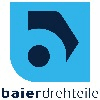FIP ARTICOLI TECNICI S.R.L.
Italy
Wholesaler

FIP ARTICOLI TECNICI S.R.L.
Italy
This bearing consists of: a lower part (base) of steel in which a cylindrical case is obtained to house the rubber disc; a rubber disc housed inside the base; a steel circular middle part which is housed in a circular case obtained in the lower part. The upper surface is treated to house the recessed and hollow PTFE core, while in the middle there is a ribbing (guide) especially made to absorb perpendicular stresses and determine the sliding direction. By the side of the guide two strips are coated with CM1 type anti-friction material, suitable to produce little friction to the sliding along the groove obtained in the upper part and coated with stainless steel; a sliding upper part, coated on the lower side with a couple of stainless steel plates which also cover the sides of the middle groove required for the case of the guide.
Request for a quote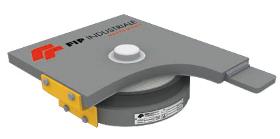
FIP ARTICOLI TECNICI S.R.L.
Italy
This bearing consists of: a lower part of steel in which a cylindrical case is obtained to house the rubber disc; a rubber disc housed inside the base; a steel circular middle part which is housed in a circular case obtained in the lower part. The upper surface is treated to house the recessed and hollow PTFE core; a sliding upper part, coated on the lower side with a couple of stainless steel plates.
Request for a quote
FIP ARTICOLI TECNICI S.R.L.
Italy
The Neoarm series includes structural bearings of reinforced elastomer, consisting of an elastomeric block in which steel laminates hot vulcanized to the rubber are inserted on multiple laminates, with the main purpose of minimizing the swelling and slipping of the rubber under load. Neoarm structural bearings in general are used if the span of the beam does not exceed 20 m, if rotations are not extreme, if displacements are small and horizontal thrusts are limited. Nevertheless, they are sometimes made in large dimensions. By vulcanizing a wedge-shaped steel plate to the upper surface of the rubber, it is possible to install this type of bearing under beams of considerable slope. Notes: Even if elastomeric bearings are designed to consider shear movements, they should not be used to oppose permanent resistance against an external shear force applied on a constant basis. This means, for example, that they should be placed horizontally on the plane even if the deck is sloping. Please
Request for a quote
FIP ARTICOLI TECNICI S.R.L.
Italy
The Elastofip series includes reinforced elastomeric structural bearings, equipped on top and bottom with mechanical anchors. These are structural bearings consisting of an elastomeric core in which one or more steel laminates are inserted, hot vulcanized to the rubber. The presence of the laminates determines a vertical (axial) stiffening effect and the simultaneous reduction in the rubber swelling. Curing has two purposes: one is to convey the rubber tangential actions to the laminate and the other is to ensure the protection of steel against corrosion. Fixed Elastofip (EF) bearings are a cross between the fixed and free sliding type of bearings, as they permit deformations in all planar directions, but at the same time produce elastic reactions proportional to the deformations. In Elastofip (EM) free sliding bearing types and Guided sliding Elastofip (EU/EU*) longitudinal/transversal bearings, on the contrary, the mutual sliding of plane surfaces, one of stainless steel and the oth
Request for a quote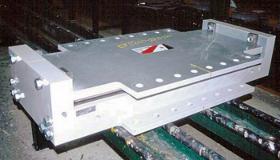
FIP ARTICOLI TECNICI S.R.L.
Italy
The Cernoflon series is a line of structural cylindrical bearings that generally allow rotations of ±3° around only one horizontal axis. Inside the bearing there are two different sliding surfaces made of either stainless or hard-chromium plated steel, which make contact with the PTFE: one surface is cylindrical to make rotations possible, and the other is flat (absent in fixed-type bearings), to allow translation movements. Horizontal loads perpendicular to the rotation axis are conveyed through the cylindrical sliding surface the concavity of which is dimensioned accordingly. The use of Cernoflon bearings is recommended whenever a high degree of stiffness against transverse rotations is considered necessary, a characteristic also typical of the Rockflon series. Their elongated rectangular shape along the rotation axis is especially suitable if there is limited space available in the perpendicular direction to the rotation axis. By virtue of the particular dielectric characteristics
Request for a quote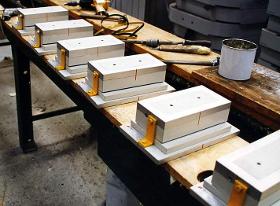
FIP ARTICOLI TECNICI S.R.L.
Italy
The Rockflon series is a line of structural cylindrical bearings that generally allow rotations of ±2° around only one horizontal axis. They represent an evolution of the roller bearings, in which rotation movements take place through the rolling friction between two steel elements, one flat and the other a cylindrical rocker so that contact occurs along the cylinder generator line. The mutual sliding of 2 plane surfaces, one of stainless steel and the other of PTFE, ensures the bearing's translation movements. The use of Rocklon bearings is recommended whenever a high degree of stiffness against transverse rotations is considered necessary, a characteristic also typical of the series. Their elongated rectangular shape along the rotation axis is especially suitable if there is limited space available in the perpendicular direction to the rotation axis. Rockflon bearings are classified by two letters that have the following meaning: KF = Fixed Rockflon Bearing KU = Longitudinally guid
Request for a quote
FIP ARTICOLI TECNICI S.R.L.
Italy
The SI-series elastomeric isolators consist of alternate layers of steel and elastomer connected by curing. Their behaviour can be modelled as linear, based on equivalent stiffness and the equivalent viscous damping coefficient. Usually they are made of high-damping elastomeric mixtures, i.e. with equivalent viscous damping coefficient between 10 and 15% and shear deformation of 100% Experimental hysteretic cycles of a SI isolator at a 0.5 Hz frequency and shear deformation ± 100% Preparation, at FIP INDUSTRIALE laboratory, of an experimental test on two SI isolators of diameter 1150 mm. A SI isolator installed at the "Da Luz" hospital of Lisbon (Portugal).
Request for a quote
FIP ARTICOLI TECNICI S.R.L.
Italy
LRB isolators are elastomeric isolators with a cylindrical-shaped core of lead. The plasticization of lead permits to obtain an equivalent viscous damping coefficient up to approximately 30%. The constitutive bond of LRB isolators is bilinear; for design purposes it is possible to use equivalent non-linear or linear models, according to regulatory provisions. Experimental hysteretic cycles of an LRB isolator at a 0.5 Hz frequency and cutting deformation ± 100%. Vibrating table tests on an LRB isolator at the National Technical University of Athens (Greece). LRB isolators installed in the office building "La Torre" of Ancona.
Request for a quote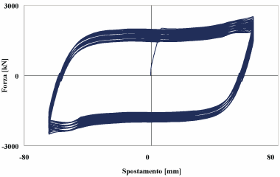
FIP ARTICOLI TECNICI S.R.L.
Italy
These isolators are the combination of a bearing and dampers in a single device; the latter are typically hysteretic dampers of steel and/or fluid viscous dampers. As such, they are characterized by a high damping capacity. The bearing can be multidirectional or unidirectional. Isolators can also include shock transmitters or mechanical fuse restraints. Experimental hysteretic cycles of a flat sliding isolator with steel hysteretic dampers. Installation of a flat sliding isolator with steel hysteretic dampers, at the Santuario 'Madonna delle Lacrime' of Siracusa. Flat sliding isolators with steel hysteretic dampers, installed in the railway lines "Caracas-Cua" and "La Encrucijada-Puerto Cabello", Venezuela.
Request for a quote
FIP ARTICOLI TECNICI S.R.L.
Italy
Curved surface sliders use gravity as a recentering force; the operating principle is the same as the pendulum. Energy dissipation is ensured by the friction of the main sliding surface. The parameters for the bilinear constitutive bond depend on the bending radius and friction coefficient. They are divided into two types, the FIP and FIP-D series, respectively with one or 2 primary sliding surfaces that allow for horizontal displacement. In the case of very wide displacements we recommend to use double curved sliding isolators (FIP-D), which permit to reduce plan dimensions. Experimental hysteretic cycles of a FIP isolator. A FIP-D isolator during testing at the SRMD laboratory of the University of California in San DIEGO. A FIP-D isolator installed in the building "Le Betulle" of Castel di Sangro (AQ).
Request for a quoteWholesaler
9 VIALE DELLA REGIONE VENETO
35127 Padova - Italy
europages also recommends
A selection of companies related to the activity:
A selection of products that might interest you

AAAGILER GMBH
Germany
Offering international, multidisciplinary team for efficient project purchasing and special procurements in Germany / the DACH region The importance of a strong procurement department is critical to successfully completing projects. DEDE Industrieausstattung recognises that adding international engineers to the team is key to successful procurement of materials and services. The team not only has broad, international expertise, but also a deep understanding of industry requirements. The engineers are not only able to minimise risks, but also proactively take measures to mitigate them. This helps to complete projects on time and on budget. DEDE Industrial Equipment also specializes in sourcing specialist products and solutions and can identify qualified niche manufacturers. Customers can benefit from this expansion and rely on the expertise and commitment of the multidisciplinary team. Clients can rely on us to meet their quality, schedule and budget requirements.
Request for a quote
PROFI HANDEL UZUN GMBH
Austria
Stainless steel stop with plastic reinforcement Extruded aluminum impact plate with rubber Easy right/left conversion Innovative Quick-Fix fastening Adjustable for 40-60 mm gate profiles For rectangular and round profiles
Request for a quote
PROFI HANDEL UZUN GMBH
Austria
Counter plate with the same shape as the industrial Locinox lock. Use in combination with the SA or SH stop with special Slovapan fastening
Request for a quoteRequest for quotes
Create one request and get multiple quotes form verified suppliers.
- Only relevant suppliers
- Data privacy compliant
- 100% free

